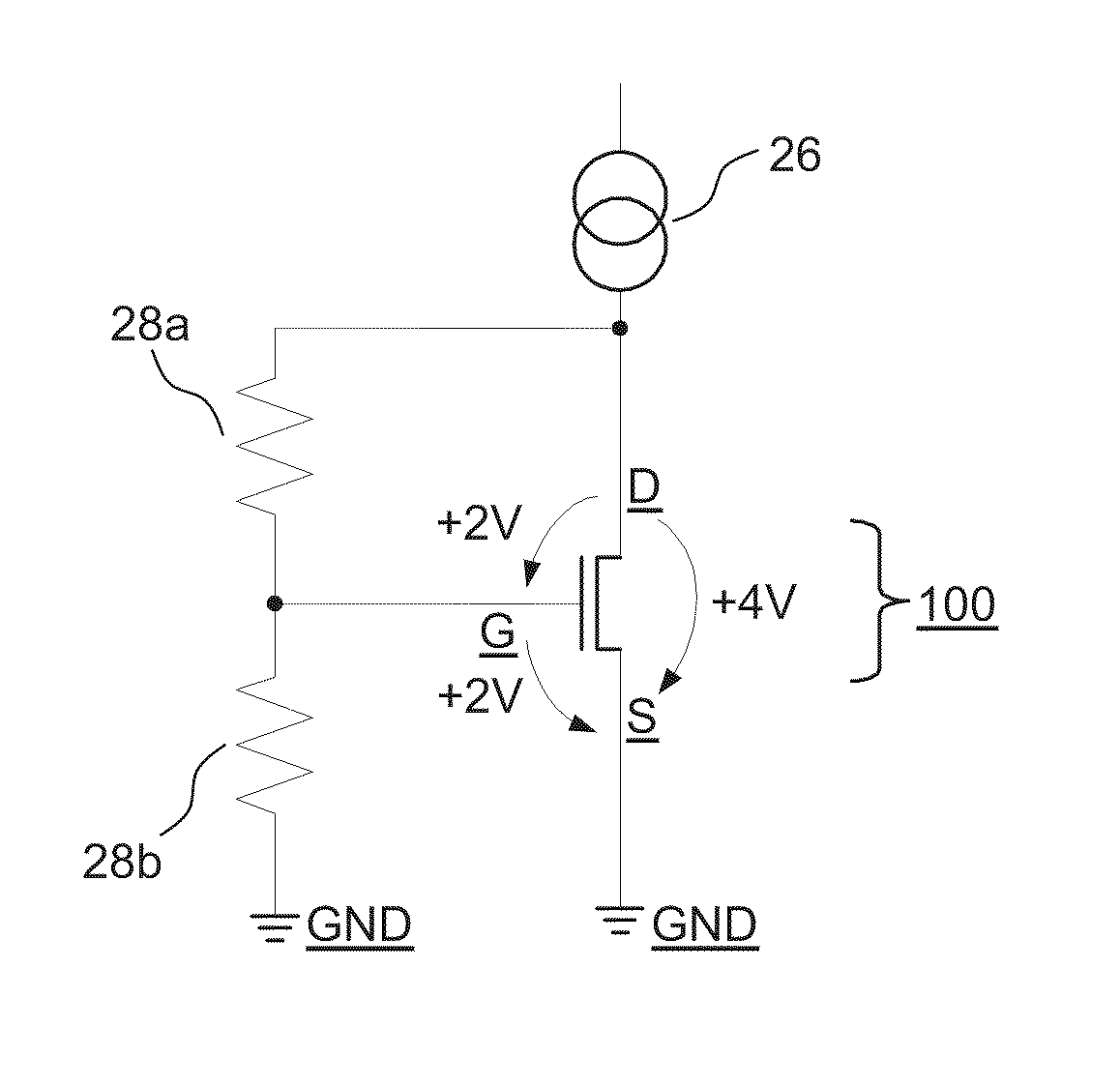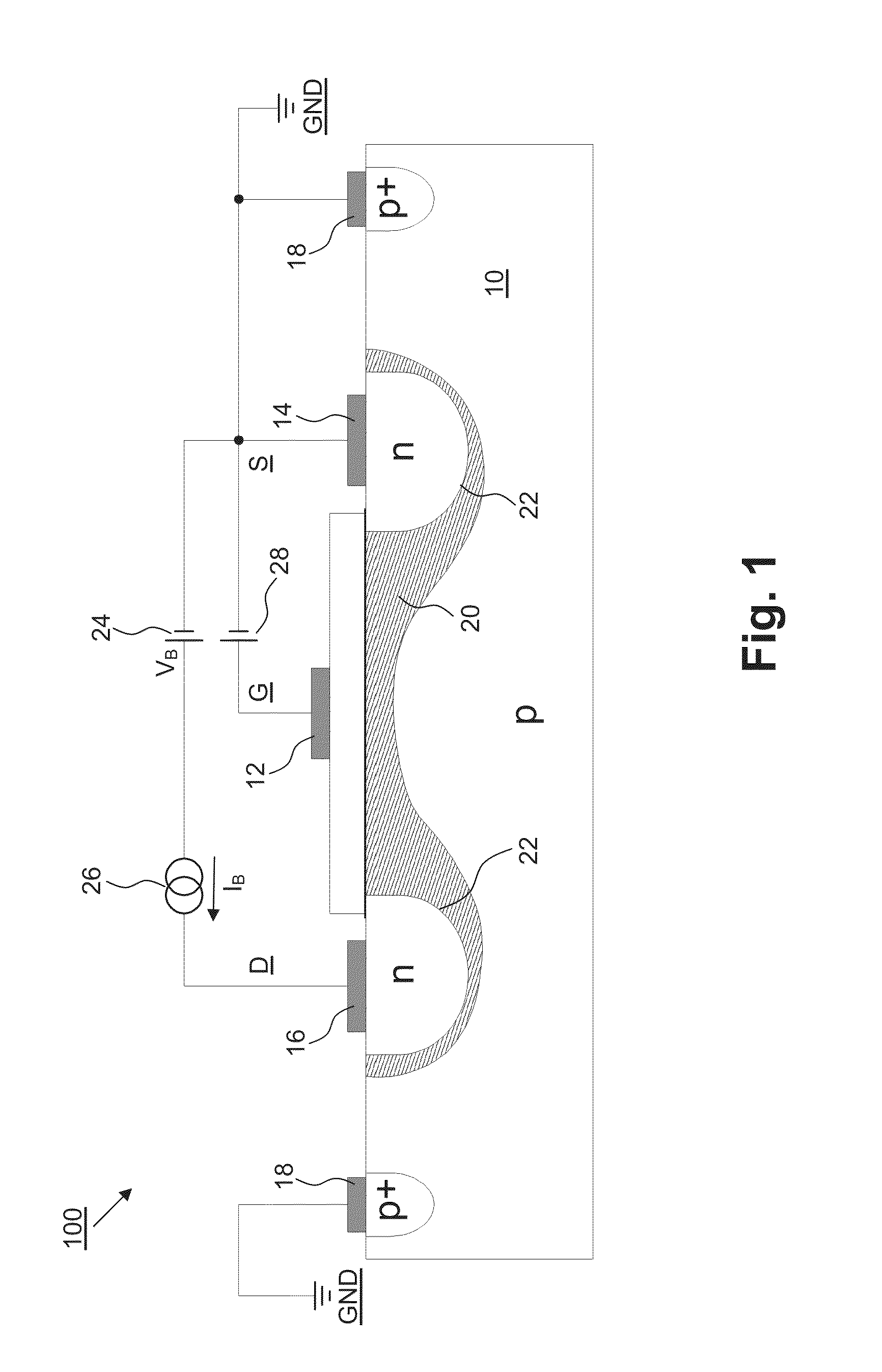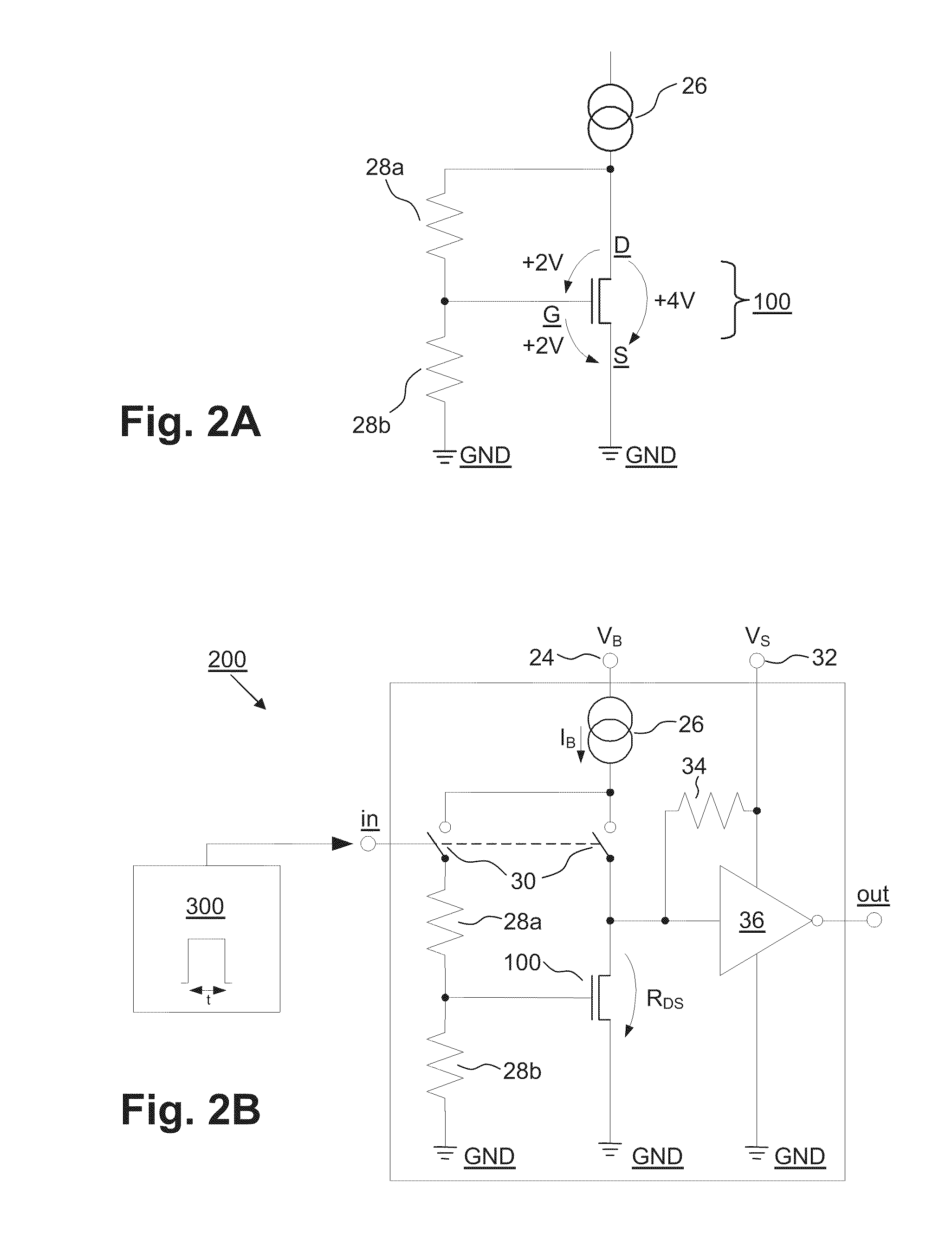Programmable antifuse transistor and method for programming thereof
- Summary
- Abstract
- Description
- Claims
- Application Information
AI Technical Summary
Benefits of technology
Problems solved by technology
Method used
Image
Examples
Embodiment Construction
[0045]FIG. 1 shows a schematic cross-sectional view of an embodiment of a programmable antifuse n-channel MOS transistor 100 according to the present invention that operates by the method according to the present invention and the conductivity of which in the programmed state is about 10,000 times greater than in the unprogrammed state.
[0046]The antifuse transistor 100 comprises
[0047]a gate G with terminal (=gate contact or gate terminal) 12,
[0048]a source S with terminal (=source contact or source terminal) 14,
[0049]a drain D with terminal (=drain contact or drain terminal) 16 and
[0050]a substrate 10 with terminal (=substrate contact or substrate terminal) 18
(the source S corresponds to an emitter; the drain D corresponds to a collector; the substrate 10 corresponds to a base).
[0051]The level of the potential difference between the source terminal 14 and the substrate terminal 18 is generally selected to be smaller than the forward voltage of silicon pn junctions 22 arranged in a c...
PUM
 Login to View More
Login to View More Abstract
Description
Claims
Application Information
 Login to View More
Login to View More - R&D
- Intellectual Property
- Life Sciences
- Materials
- Tech Scout
- Unparalleled Data Quality
- Higher Quality Content
- 60% Fewer Hallucinations
Browse by: Latest US Patents, China's latest patents, Technical Efficacy Thesaurus, Application Domain, Technology Topic, Popular Technical Reports.
© 2025 PatSnap. All rights reserved.Legal|Privacy policy|Modern Slavery Act Transparency Statement|Sitemap|About US| Contact US: help@patsnap.com



